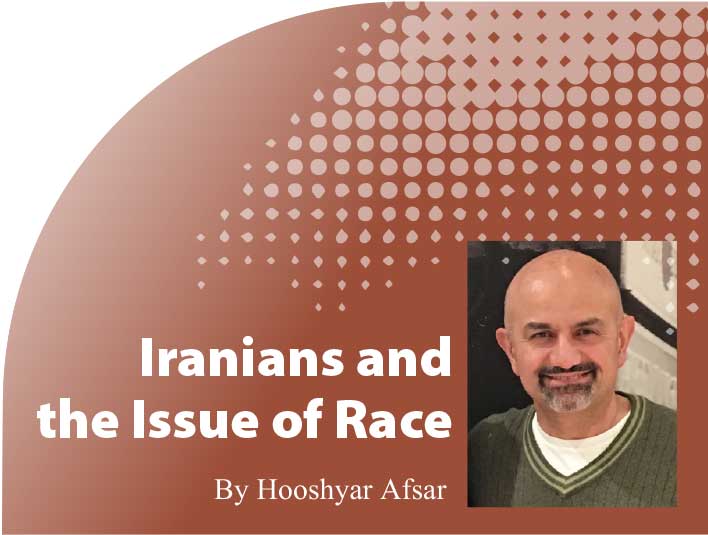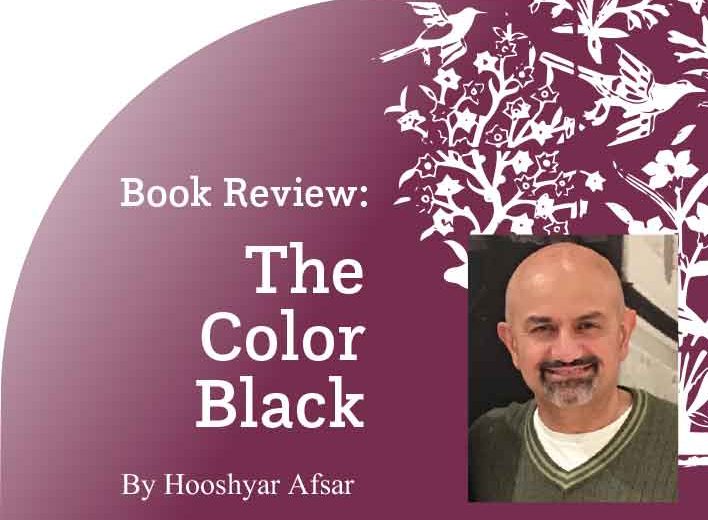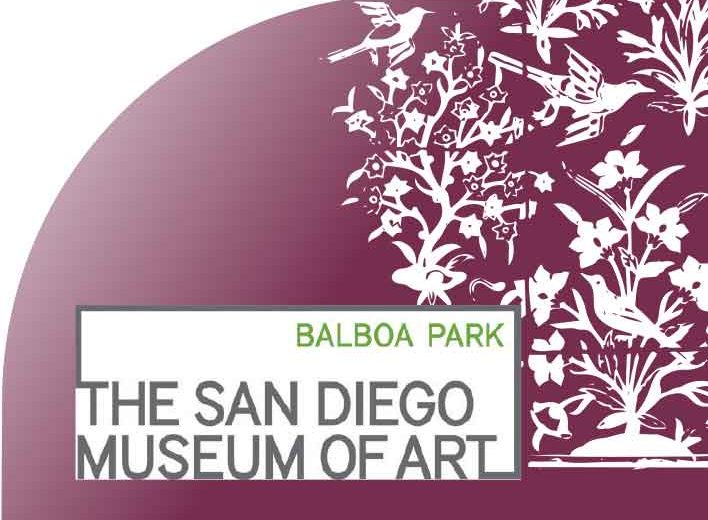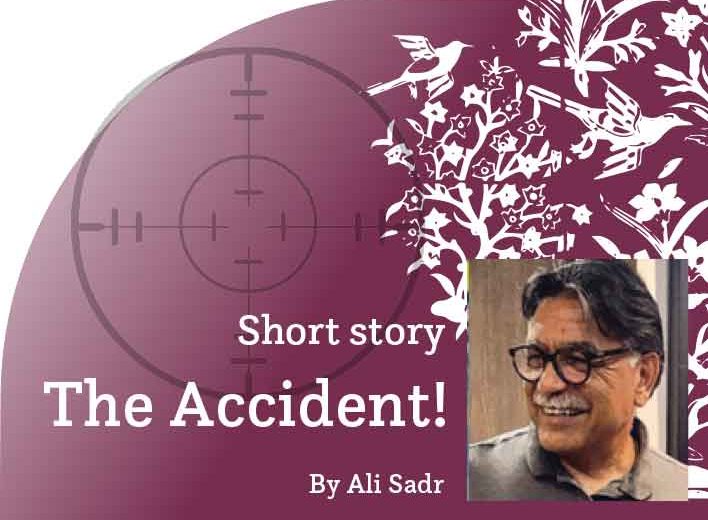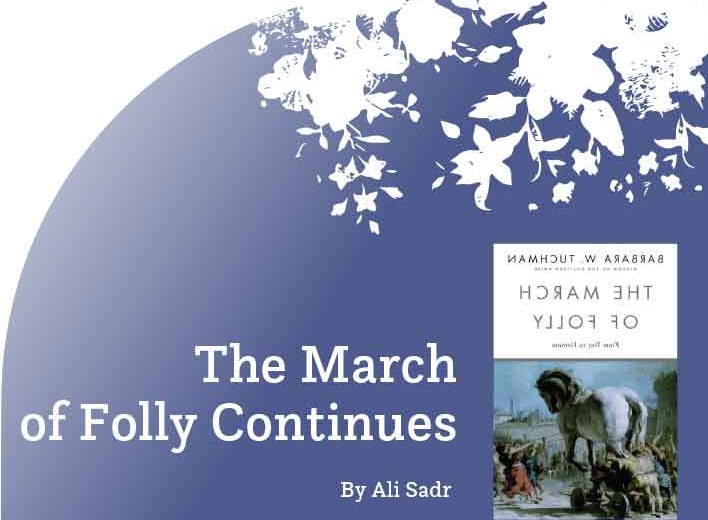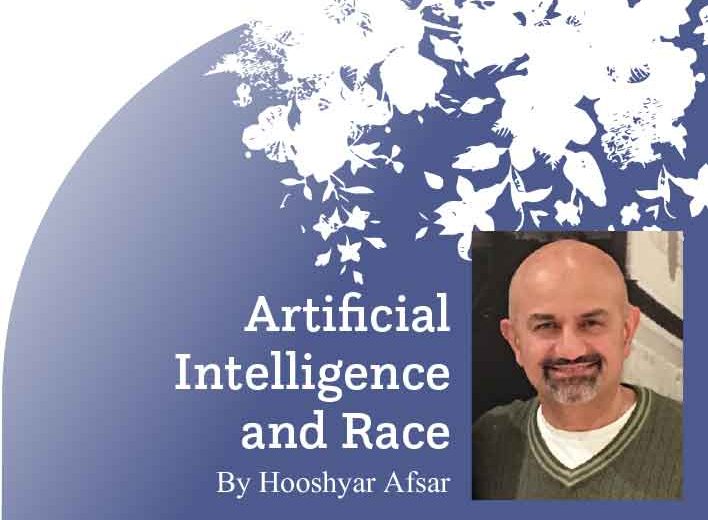Iranians and the Issue of Race
By Hooshyar Afsar
Introduction
Engaging the issue of race is a difficult subject anywhere and it is even more challenging when it comes to Iran and Iranians, specifically regarding the scope of the modern Iranian state over the past century. The purpose of this article is to focus on how race is digested and handled in Iran and by Iranians outside Iran and how it impacts the fate of our communities.

A Brief Review of Race and the Notion of an “Aryan Race”
In general, the concept of “race” and the division of humans based on skin-deep and superficial features was introduced in the eighteenth century by biologists and anthropologists of the time. But over time—and with scientific progress—this concept was completely rejected by science in the twentieth century and especially after the completion of the Human Genome Project in 2003. In other words, today’s science explains the superficial differences among humans across the globe as a result of adaptation to geographical and climatic conditions and division of human species based on those differences, i.e., race is not scientific. Social scientists have defined race as a social construct with significant social, economic, and political consequences in the past 300 years. We continue to live and grapple with those consequences worldwide today. For more on this topic, please see Peyk #205. [1]
The idea of Aryanism first started as a purely linguistic concept during a search for a mother tongue for the family of Indo European languages by world-renowned British philologist Sir William James in the late eighteenth century. Later, during the nineteenth and twentieth centuries in Europe, with the rise of romanticism and the emergence of scientific racism, the linguistic notion of an “Aryan Mother Tongue” mutated to the invented myth of an “Aryan Race.” This fiction became the ideological basis of the Nazi Party in Germany, resulting in the genocide of the Holocaust and World War II, with over fifty million dead worldwide. While the “Aryan Myth” is debunked in Europe and North America and the term is used by white supremacist groups in the margins of political spectrum, with the rise of white nationalism and facism in the last decade more and more such groups are attempting to gain a new presence in the political mainstream.
The Persianized versions of the “Aryan Race” (nezhād-e āriyāyi in Persian) and “Aryan Land” (sarzamin-e āriyāyi in Persian) are parts of an even more recent phenomenon that is less than 100 years old—the emergence of Iranian nationalism in the nineteenth and twentieth centuries. During this time, Iranian intellectuals, seeking a shared history with modern Europe, invented the Iranian version of European Aryanism and the Aryan Myth as a “historical fact.” The Persianized version of the “Aryan Myth” was then effectively used by the founder of the Pahlavi dynasty, Reza Shah, and his son, Mohammad Reza Shah, as part of the nationalist ideological basis of the Modern Iranian state beginning with Reza Shah’s reign in 1925. For more on this topic, please see Peyk #206. [2]
Why Talk About the Issue of Race For and Among Iranians?
While race as a social construct has had tremendous social consequences for the human society worldwide, including the Iranian community, the notion of “Aryan Race” (nezhād-e āriyāyi) has had significant social and political consequences for Iranians, inside and outside Iran, that continue to impact our communities today.
This author could not find any scientific studies and surveys on the percentages of Iranians inside and/or outside Iran who believe in the notion of “Aryan Race,” yet it is not outrageous to claim that the majority of Iranians both inside and outside of Iran do have such beliefs. While most of the people in this group do not identify with the Nazi genocide and marginal White Supremacist groups, their belief is not harmless to our communities around the world. To better understand those consequences, we first need to talk about the concepts of nationalities and ethnicities in Iran.
Nations and Ethnicities
It is essential to note that there is a certain level of fluidity associated with nations, nationalities and ethnicities—both as concepts and as entities. To begin with, the concepts of ”nation” and “nation-state” are social entities that started with studies and definitions that, to a great extent, were Eurocentric—when it comes to Iran, many aspects of those definitions and concepts may or may not apply. Nationality and ethnicity also have fluid and overlapping definitions. To all this, we should add that Iran has gone through significant changes in the past 100 years. It makes sense to have all those notions of fluidity and change in mind when reading this section.
In the mind of famous European and North American historians and sociologists, the European definition of nation is very much tied to and is believed to have followed the triumph of reason over religion, the advent of print-capitalism and industrialization. [3]
Unlike Europe and the Americas, in countries like Iran, nationalism emerged not as a result of such a phenomenon, yet it may have partially resulted in industrialization, growth of print, and other channels of communications. One could even claim that with the emergence of the Woman, Life, Freedom movement, perhaps a newly formed triumph of “reason over religion” is in the making. In his book, Emergence of Iranian Nationalism, Professor Reza Zia-Ebrahimi writes: “While acknowledging the transregional character of non-Western forms of nationalism, we need to take them seriously as genuinely relevant historical phenomena that are not purely imitative or derivative.” [4] While, as discussed in the previous section, nationalism in Iran emerged in the second half of nineteenth and early decades of the twentieth centuries, Iran throughout its history, even with the significant territorial shifts, has been the land of various groups of people who have arrived at a group identity based on a set of common characteristics that make them distinct. Those groupings are referred to as ethnicities in modern social sciences.
In general, ethnicities are mainly organized based on common language, region, shared history, tradition, and culture, among others. In Iran, language and region have had a clear historical significance. Persians are born into Persian (Farsi) speaking families and live mainly in the center and northeast, just as Azerbaijanis, Kurds, Lurs, Blouchis, Arabs, Turkmens, Mazandaranis, Gilakis, and so on were born into families that had those native tongues and lived in their own regions. Persian is the official language of the country and is spoken all over Iran, meaning that over 40% of the Iranian population is actually bilingual.
Since the formation of the modern Iranian nation-state in the past 100 years, social, political, and economic rights of ethnic minorities in Iran have not been recognized by the central governments. This has been true both during the Pahlavi era and after the 1979 revolution and formation of the Islamic Republic. In fact, the striving for such rights—even the right to read and write their own language—has been treated with the label of cessationism combined with violent repression. On top of overt repression, there has been consistent marginalization and dehumanization of these ethnic communities and labeling them to be of lesser intelligence and/or lacking moral values. This is similar to the made-up construct of race and dividing the human species into hierarchies based on traits such as intelligence, work ethic, or moral values, among others. That is exactly why such treatment of ethnic minorities in Iran should be treated as open and unedited ethnoracial dehumanization of tens of millions of people. Let’s be clear, we are not only talking about government policies, we are talking about ethno-racism as disseminated by many Persian Iranians through jokes and other demeaning behavior that characterizes their fellow compatriots as less than human. To this we should add anti-immigrant racism toward Afghan refugees, over two million of whom live in Iran. While sharing a common language with majority Persian speakers in Iran and to a great extent a common history and culture, they are subject to the same dehumanization that immigrants and refugees (except for Ukrainians) suffer in Europe and the United States. [5]
Modern Iran: What Happened and What Could Happen in the Future
While looking for and, to a great extent, inventing a common heritage with Europeans did not start with Reza Shah, he in turn used the Aryan Race (nezhād-e āriyāyi in Persian) as an ideological weapon to create a modern nation-state in Iran and consolidate power. He had a group of historians teach him about the history of ancient Iran and Persian literature on a regular basis and he became very emotional and energized when he was taught about the grandeur of the Persian Empire prior to the Islamic conquest of Iran. [6] He became especially interested in “The Book of Kings” (shāhnāmeh in Persian) by the renowned tenth-century Persian poet Ferdowsi. Consisting of over 50,000 verses, The Book of Kings is an epic book of poems and a mixture of mostly myth and some historical facts in praise of pre-Islamic Iran’s kingdoms. Ferdowsi—and his epic work of more than three decades—is credited with reviving the Persian language after the Islamic Conquest, when Arabic was the official language of the Islamic empire. [6] One of the most significant cultural events of Reza Shah’s reign was Ferdowsi’s millennial celebrations in 1934 when and where Reza Shah himself inaugurated the monument. [7]
Prior to founding the Pahlavi dynasty, Reza Shah used his military experience and his position as the Minister of War to defeat major, but mostly regional, movements and insurgencies to consolidate power and gather support. Many Constitutional Revolution intellectuals supported him since it brought stability and, to a great extent, security to many parts of Iran. Following the role model of Mustaf Kamal Ataturk in neighboring Turkey, during his 16-year reign, Reza Shah led Iran to the formation of a rather modern nation-state by establishing a new educational system, including the first university in Tehran; a new and modern judiciary; newly organized central armed forces; major infrastructure projects, including asphalt roads; and, most importantly, a national railway network, among other projects. The Iranian intelligentsia led the implementation of many of these projects. Modernity came mostly from above and at the cost of repressive policies that did not even spare some of the shah’s own early ministers. Forced unveiling of women in 1936 (kashf-e hijab in Persian) was a clear example of the shah’s modernity-from-above policies. [8] Later, Reza Shah’s son, Mohamad-Reza Shah (known in the western media as The Shah), implemented major reforms in 1963, including land reform and women’s suffrage. Land reform was one of the goals of the intellectuals leading the Constitutional Revolution more than five decades earlier. These were progressive reforms and were both opposed by the majority of Shia clergy led by Ayatollah Khomeini, yet they made their irreversible mark on the Iranian society such that the fall of the Shah as a result of the 1979 revolution and the formation of the Islamic Republic under the leadership of Khomeini could not reverse them.
All of our lives as Iranians were forever changed by the nation-state, by modernity and reforms introduced during the Pahlavi era, and by the 1979 revolution—positive developments came with the high price of political repression and persecution of ethnic minorities. The “Aryan Race” was the central ideological theme that has, to a great extent, stayed alive among Iranians both inside and outside Iran. The Islamic Republic has exacerbated the political and ethnoracial repression by adding the element of religious persecution of non-Shia population groups and gender apartheid to the unresolved Iranian political dilemma.
With the advent of the Woman, Life, Freedom movement in September 2022, we Iranians have arrived at the crossroads of choosing a future path. Are we going to continue to cling on to the notion of “Aryan Race,” considering its tragic and genocidal consequences worldwide? Or are we going to choose a new path based on human rights as an intersection of various identities that shall be honored as the crux of Iranian future citizenry? Are we going to attempt to “pass as white,” hoping it gives us some sort of social, political, and economic advantage, or are we going to accept the fact that in reality there is a “limit to whiteness” and our true long-term interest lies in celebrating diversity and standing in solidarity with all human communities?
The Power of Diversity Worldwide and in the Iranian Diaspora
Ethno-racism inside Iran, which has an “Aryan Race” dimension, is prevalent among first-generation Iranians in the diaspora (consisting of second- and third-generation Iranians born outside Iran) whose population has grown to approximately 6 million in the decades after the 1979 revolution. [9] People of Iranian descent in many west European countries, North America, and even New Zealand have become city council members, mayors, members of parliament, members of the cabinet, successful academicians, and prosperous influential businesspeople.
Europe and North America have seen a rise in white nationalism and fascism in the past two decades. Political forces at the helm of these movements see the growth of immigrant communities inside their borders along with progressive movements that support a diverse future where intersectional human identities are honored as the crux of citizenship, a threat to their economic and political interests. They use the worsening of income inequality along with growth of immigrant communities in the last four decades to divide their population by creating non-existent threats from immigrants and communities of color. They also create total falsehoods on credibility of elections when they lose to hinder the democratic process and justify authoritarian rule.
In this political atmosphere, the Iranian diaspora, along with second- and third-generation Iranians, have also arrived at a fork in the road to their future. Will they side with other human communities in standing for a diverse future where intersectional identities of human beings are honored or will they support division, racism, and policies of income inequality or perhaps be passive observers?
Experience and actions of second- and third-generation Iranian Americans and people of Iranian descent in European countries seem to point to a hopeful future where diversity is honored. [10] We could all endeavor to make those tendencies and trends our common future reality.
References:
[1] http://peykmagazine.com/en/2023/05/08/the-myth-of-an-aryan-race/
[2] http://peykmagazine.com/en/2023/07/03/the-myth-of-an-aryan-race-2/
[3] Anderson, Benedict. Imagined Communities: Reflections on the Origin and Spread of Nationalism. Mandaluyong City: Anvil Publishing, 2006.
[4] Zia-Ebrahimi, Reza. The Emergence of Iranian Nationalism: Race and the Politics of Dislocation. Columbia University Press, 2016, p. 42.
[5] “Refugees in Iran.” n.d. UNHCR Iran. https://www.unhcr.org/ir/refugees-in-iran/
[6] Zia-Ebrahimi, Reza. The Emergence of Iranian Nationalism: Race and the Politics of Dislocation. Columbia University Press, 2016, pp. 188-189.
[7] Zia-Ebrahimi, Reza. The Emergence of Iranian Nationalism: Race and the Politics of Dislocation. Columbia University Press, 2016, pp. 192-193.
[8] Amin, Camron Michael. “Propaganda and Remembrance: Gender, Education, and ‘The Women’s Awakening’ of 1936.” Iranian Studies 32, no. 3 (1999): 351–86. http://www.jstor.org/stable/4311268.
[9] There is no central database of all Iranians and people of Iranian descent living abroad. The Ministry of Foreign Affairs of the Islamic Republic put the number at just over four million in 2021 (https://iranian.mfa.ir/files/mfairanian/Amar.pdf). A 2020 European Union funded study by the International Organization for Migration (https://dtm.iom.int/sites/g/files/tmzbdl1461/files/reports/IRN_EU_2020.pdf) put the number at 512,000 in Europe. Other estimates put the total at over six and a half million (https://en.wikipedia.org/wiki/Iranian_diaspora).
[10] Maghbouleh, Neda. The Limits of Whiteness, Iranian Americans and Politics of Race. Stanford University Press, 2017, p. 52.

